The ethnic minority communities living in Sapa town
1. H’Mong ethnic group
H’Mong people mainly live in Sapa. It is easy to recognize their outfits: men often wear black or dark blue pants, short-sleeved blouses with a lap cover their buttock. They often wear tiny round shallow hats on the top of their heads. Some of them are black decorated with brocade embroidery.
Women wear black too but they also wear a black scarf. They put on a sleeveless overcoat running to the knees like men’s coat. This special overcoat is rolled with beeswax to make a silvery black color. Especially, H’Mong women wear knee-length shorts, not skirts. They wrap the leggings around their calves carefully by a narrow strap.
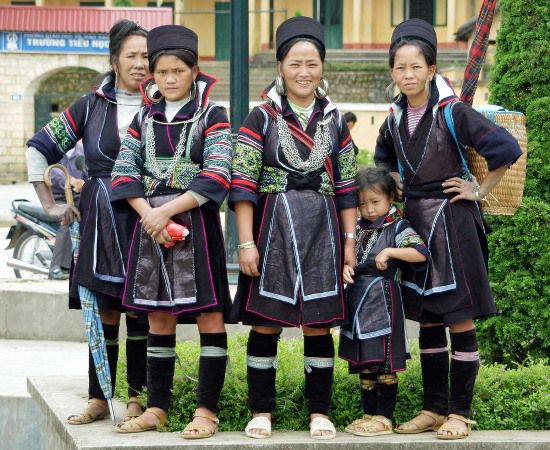
H’Mong people in Sapa
In Sapa, most of H’Mong people live in Cat Cat village which is 2km away from the main town. Here, tourists can find out and explore their daily life and enjoy unique dishes such as thang co (horse meat) – a Sapa’s specialty, chicken blood soup, corn alcohol, dau xi (fermented peanut).
In the cultural life, H'Mong people are passionate about their folk songs that are the songs of love and marriage. They often sing when they’re working on the field, weaving or going to the market, attending festivals.
Gau tao is an outstanding festival of H’Mong people. The folk songs are not only expressed in words but also through traditional musical instruments like pan flute or horn. H’Mong youngsters like playing panpipes, they blow it while dancing and expressing their heart to their companions for life, praising the beauty of life and their country.
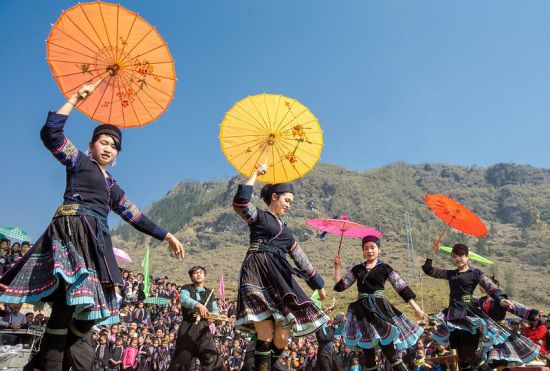
2. Red Dao ethnic group
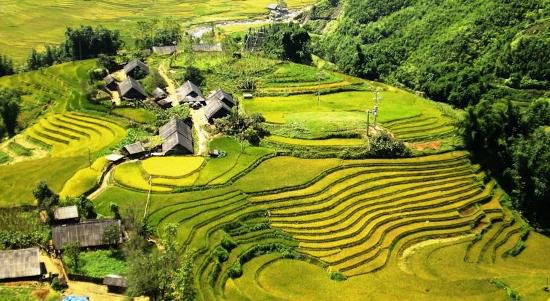
Nowadays, come to Sapa, you can easily recognize the Red Dao’s costumes. It’s colorful. Red Dao men often put their hair in a bun on their nape. Their clothes are often short with indigo blue and black color. Red Dao women’s costumes are more colorful with 5 colors but the red is the main one. The iconic appearance of Red Dao women is that they wrap their long hair in a special red scarf all over their head.
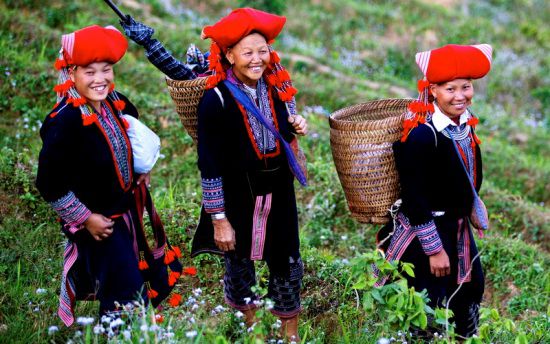
While H’Mong people often choose high mountains to live, the Red Dao choose valley or halfway up the mountain to cultivate maize, plant rice and cardamom. They like to build houses in the shape of three or five compartments. There are 2 kitchens: one for cooking and the other sub-kitchen near the door for warming up all the family’s members when the winter comes. In other compartments, they store some types of vegetables to eat gradually.
“Cap Sac” ritual is a typical festival bearing a big significance in Red Dao people’s daily life. According to many tourists’ travel experiences, you should travel to Sapa in the end of the year to start exploring as well as seeing this special ritual with your own eyes. The Red Dao’s Cap Sac ritual often held in November to December annually because this is their free time.
The purpose of Cap Sac ritual is to recognize the people as the real descendants of Ban Vuong (the forefather of the Red Dao). The ritual is divided into levels: 3 lamps, 7 lamps, and 12 lamps. The Red Dao boys have to undergo the Cap Sac ritual at 3 lamps or higher level to have heart, virtue, and be recognized as descendants of the Red Dao’s forefather.
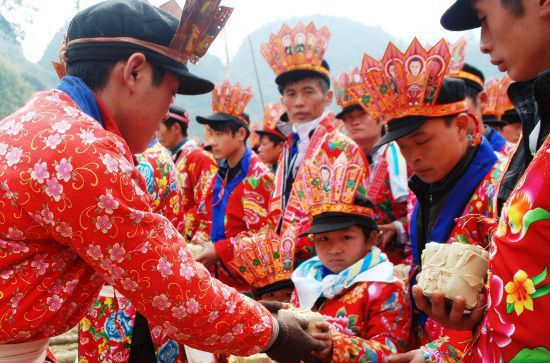
The Red Dao’s Cap Sac ritual has a spiritual significance in life as well as high education. The traditional Cap Sac ritual of the Red Dao is to educate people and always remember their origin of ancestors, nation.
3. Tay ethnic group
Coming to Sapa, you can easily recognize Tay people because their costumes are very simple with a dark blue. Both men and women wear four-part shirt with a V-cut, crew neck, and 2 pockets in the front lap along with a wide cloth belt wrapping around their waist, embellished with glitter. On the special occasions like holidays or festivals, they wear five-part ao dai with right-armpit split and copper buttons.
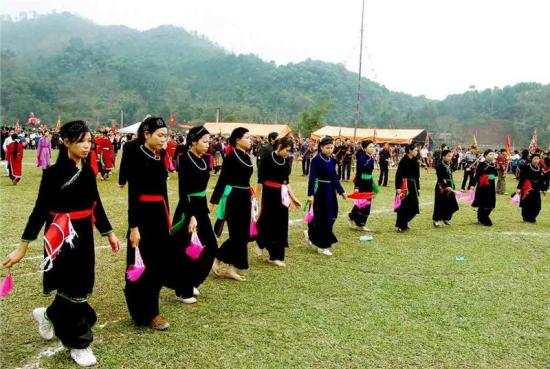
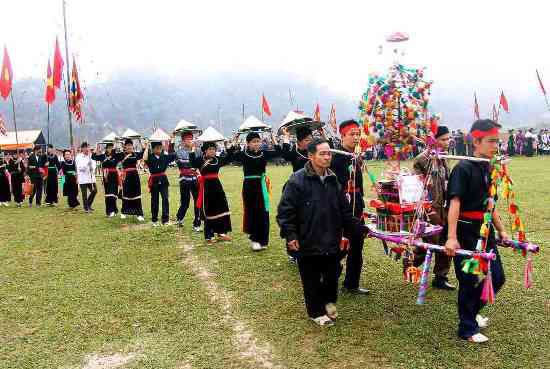
4. Giay ethnic group
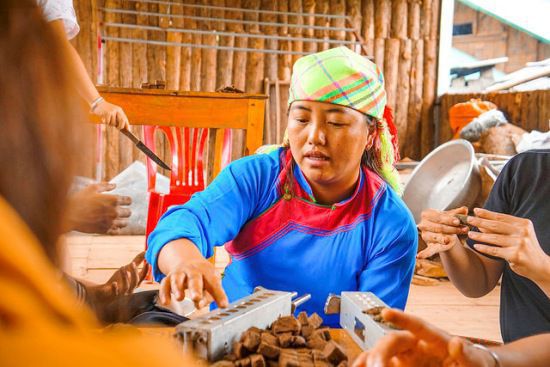
The Giay’s typical festival is “Roong pooc" that held in January to pray for a year of great harvest, favorable weather. The Giay’s folk-songs and proverbs are very diversified, especially there are many tales explaining the phenomenon in nature.
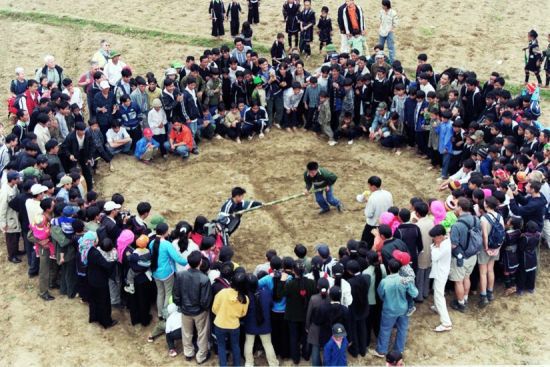
If you have a chance to visit Sapa, you will experience and learn about the unique cultural customs of different ethnic minorities groups. Far East Tour offers you some of our best selling tours:
1. https://www.fareastour.asia/vietnam-destinations/sapa-vietnam/sapa-trekking-tour-1-day/
3. https://www.fareastour.asia/vietnam-destinations/sapa-vietnam/sapa-trekking-tour-2-days/
Or contact us by the following information:
Hotline : (+84) 917 620 980
Email : sales@fareastour.com.vn
related destinations
Can Cau Market – The special cultural trait of the ethnic groups
Si Ma Cai highland (Can Cau commune, Si Ma Cai district, Lao Cai province) has existed a unique market which...(+84) 3 87 86 68 52
Testimonials
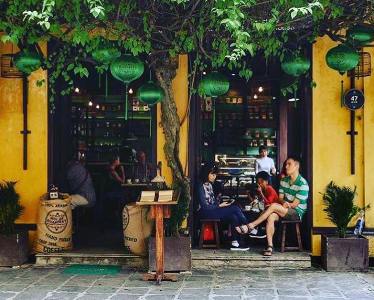
Excellent arrange, a really adapted proposal to our request
We were a group of 3 couples, chose FarEastour for our trip in Vietnam. We had some wishes:...
Highly recommended travel agency
We are very happy with our 22 days trip organized by Far East Tour! Our travel consultant,...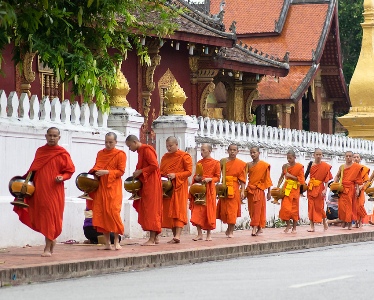
Dear Esther, I had a great time in Asia! You did arrange everything so perfect. Thank you so...

Touch with you again and remembering our unforgettable trip
Dear Christine, Hello, is good getting in touch with you again and remembering our unforgettable...
We had a very pleasant tour on Douce Mekong
Dear Wind, Thank you once again for your assistance, we had a very pleasant tour on Douce...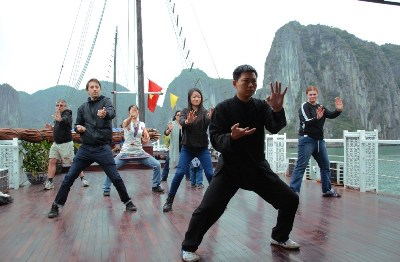
The trip to Ha Long Bay exceeded my expectations
Morning Esther, Now that I have returned to Australia I just wanted to send you a quick...
My trip to Sapa with your company has been great
Thanks a lot for your collaboration. About my trip to Sapa with your company has been great. The...
13 Days From Hanoi to Mekong with lots of happiness
We have been very happy having Mr Cong as a guide for Hanoi, and our cruise in Halong Bay was...
We asked Far East to put together a tour of Vietnam from north to south. They promptly emailed a...

Very professional and experienced travel agent
Very friendly and professional travel agent. Good advice given on what type of journey suits you....
I recommended your company to our travel agent in Germany
Dear Christine, Everything was fine, also the food. And for the vegetarian they tried special... Vietnam Tours
Vietnam Tours Vietnam Touren
Vietnam Touren Voyage au Vietnam
Voyage au Vietnam 越南旅游
越南旅游 越南旅遊
越南旅遊
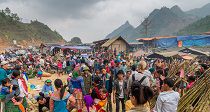

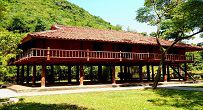
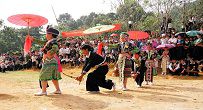



24/7